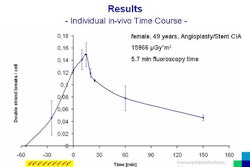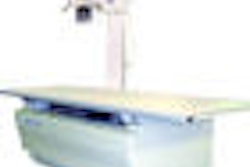Two years ago, the American College of Cardiology (ACC) was the locus of noisy debate about the best way to treat coronary artery disease. Receiving wide publicity via early publication in the Wall Street Journal and elsewhere, the Clinical Outcomes Utilizing Revascularization and Aggressive Drug Evaluation (COURAGE) trial questioned the usage of bare metal and drug-eluting stents in stable angina patients.
Many wondered: Would the findings give sufficient medicolegal cause for percutaneous coronary intervention (PCI) rates to drop in favor of drug and lifestyle approaches?
A study released in May 2009 by IMV Medical Information Division of Des Plaines, IL, offers the strongest evidence yet that COURAGE did make an indelible impression in the minds of patients, primary care physicians, and cardiologists, thereby reducing PCI rates. Total patient cases accommodated by the nation's cath labs declined to 3.75 million in 2008, an 11% drop from 4.21 million in 2006, according to IMV's research study. This is in marked contrast to IMV's prior 2006 cath lab report, which identified a gradual 9% increase in patient cases from 3.85 million in 2002.
"On the cardiac side, the downturn seems due to a reduction in coronary cases, while the proportion of cardiac device placements, electrophysiology [EP] studies, and noncoronary cardiac cases taking place in cath labs grew from 9% in 1998 to 24% in 2008," said Lorna Young, senior director of market research for IMV. "On the cardiac therapeutic side, we've also seen a downturn in procedures. One potential explanation is the big brouhaha a few years ago about drug-eluting stents."
Device recalls and more bad press
But stents and the COURAGE study weren't the only factors, according to Dr. Robert Greene, director of the cardiac cath lab at Alta Bates Ashby campus in Berkeley, CA. In 2007, three flagship devices in interventional cardiology were all being challenged.
"First, COURAGE suggested medical therapy was just as good as interventional therapy for patients with chronic angina," Greene said. "It was blown out of proportion in the press and misrepresented by primary care physicians. Then, with drug-eluting stents, the safety concern about late stent thrombosis was mostly due to patients who stopped taking Plavix after a year. That got a lot of bad press. And on the EP side, we came right on the heels of implantable defibrillator and aortic endograft device failures and recalls."
Procedures at the lab Greene has directed for the past 30 years dropped 5% to 10% as a result. "We definitely saw a decrease from 2007 to 2008, though not as dramatic [as the IMV statistics]," he said. "We anticipate that we've plateaued out, and predict slow, steady growth from 2009 to 2012."
Greene is confident that "damage control" from the medical community will restore confidence in interventional cardiology, pointing to new U.S. Food and Drug Administration (FDA) guidelines on using Plavix with drug-eluting stents, more nuanced interpretations of the COURAGE trial, and a new generation of implantable defibrillators.
CT angiography: New territories, old turf
Another proposed factor affecting cardiac cath lab utilization is the growing interest in CT angiography (CTA).
In IMV's January 2009 study titled "Present Practices and Future Directions in Cardiac Imaging: The Cardiologist's Perspective," IMV found that the adoption of 64-slice CT equipment by cardiology practices throughout the U.S. has more than doubled over the past two years. The study found that 45% of the cardiology practices surveyed presently own or lease CT equipment, whereas only 24% of the practices surveyed by IMV in 2006 owned or leased CT equipment at that time
Significant barriers still block CTA from making inroads into cath lab territory, however. Greene does not attribute any loss of his cath lab's volume to CTA: "We haven't seen a lot of CTA in the Bay Area. Medicare doesn't pay for it, and the majority of the scanners are not in hospitals, they're freestanding." He hastened to note widespread cardiologist interest in the modality, with many colleagues taking courses on reading the scans.
Interestingly, Highland Hospital, the Bay Area county medical center treating mostly nonpaying patients, does have a multislice CT angiography unit, which it employs to triage patients with chest pain to see if they need cardiac catheterization. "If anything, CTA might be a way to find additional patients for cath labs," Greene surmised.
"I think one of the things that has hurt CTA is cardiology, radiology, and vascular surgery turf wars," he said. "This has substantially delayed adoption, as hospitals' hands were tied until the doctors could agree on who owned the modality."
In keeping with the drop in utilization, the May 2009 IMV survey found the nation's cath labs were firmly in replacement mode when it came to purchasing. Of those planning to purchase cath equipment in the next three years, 60% will be purchasing new equipment and 40% will be replacing existing cath labs. New technologies such as flat-panel digital detectors, although planned for 89% of future units, aren't sufficient to drive an increase in sales, according to Young.
Meanwhile, niche technologies such as intravascular ultrasound continue to grow, with an installed base of 63% of labs, compared with 48% in 2003. One-third of cath labs now have EP capability, up from 23% in 2000.
More studies needed to examine causes
Although most agree that cath lab procedure volume is down, not everyone agrees on exactly when the decline occurred or by how much. When further parsed, IMV's data show a 10% drop from 2006 to 2007, followed by a 1% drop from 2007 to 2008, whereas Greene's practice saw most of its decline later rather than earlier. The IMV results were stark enough for Young to seek corroboration from other sources.
"The New Jersey Department of Health has cardiac data registries where they've been tracking cath lab procedures for about 10 years. They showed a decline from 2006 to 2007, followed by flattening in 2008," Young said. However, representatives of the state cardiac data registry declined to speculate on record about potential causes, warning that another year's data would be needed to ascertain the direction of the trend.
Oakland, CA-based interventional cardiologist Dr. Richard Terry disputes the effects of COURAGE, CTA, drug-eluting stent controversies, or device recalls on the falling numbers at his practice, saying that despite the 11% drop he saw in PCI from 2006 to 2008, his total procedure volume did not drop as far due to an increase in EP.
"The economy played a part, I am sure," he said. "I can't honestly say why the numbers are down. Better prevention?"
By Alexandra Weber Morales
AuntMinnie.com contributing writer
May 26, 2009
Disclosure notice: AuntMinnie.com is owned by IMV, Ltd.
Related Reading
Mammography procedure volume drops 16% since 2000, March 17, 2009
Growth rate for PET procedure volume slows to single digits, February 17, 2009
CT installed base triples in cardiology practices, December 23, 2008
IMV: Nuclear med procedures up in 2007, November 11, 2008
Radiation oncology procedure volume edges up, report states, August 28, 2008
Copyright © 2009 AuntMinnie.com



















